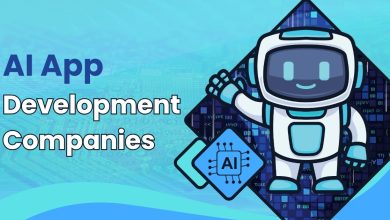
Now a household name, ChatGPT introduced generative AI to the masses in November 2022. The technology has snowballed since, with AI becoming a global sensation – driving conversations and gaining fascination from playgrounds to board rooms. Since this worldwide revelation, the capabilities of artificial intelligence have increased tenfold. Generative AI is now capable of generating highly realistic videos, sounds and even complex code. With all these developments, the question on everyone’s lips is quite simply, ‘what next?’
The answer? Agentic AI. Unlike traditional automation tools or generative models that simply respond to prompts, agentic AI systems are goal-driven. These agents are able to proactively reason through tasks and act upon their decisions – so long as it is within a predefined outcome. Agentic AI is capable of reviewing not only simple tasks, but even complex ones that include detailed processes and multiple decision points. With this ability to act autonomously, agentic AI can empower companies to completely revolutionise their business models.
The AI journey
The early benefits of generative AI are still evident today, with 78% of companies now utilising it across multiple business functions, including customer service (56%), cybersecurity and fraud prevention (51%), and inventory and supply chains (40%).
The recent shift towards agentic AI heralds the dawn of an ambitious new era. Rather than a tool to improve individual efficiency, AI agents allow businesses to automate entire processes in ways that previous systems, such as Robotic Process Automation (RPA), couldn’t. Where these prior approaches were limited by rigid formulas and conditional rules, AI agents are designed to be autonomous. With the ability to assess imperfect or incomplete data and determine the best course of action, they can carry out tasks that previously required human judgement.
As the technology becomes ingrained in more and more complex systems, agents will work in tandem, operating in orchestrated multi-agent systems. Much like a physical workplace, these agents will be able to coordinate tasks, pass information to each other, and adapt dynamically to changing environments or inputs, among other advanced capabilities that are still being explored.
From here, the opportunities are endless. From customer-facing use cases to back-office environments, AI agents are proving both their worth and versatility. As business embrace this technology to automate these simpler tasks, staff will have more time to focus on higher-value activities.
However, in the midst of all the excitement, it is important to understand what agentic AI isn’t. These systems are more than just smarter chatbots or APIs with memory; they are designed to operate independently, pursue goals and adapt their behaviour based on context and feedback. Despite these already advanced capabilities, it is still early days for agentic AI – momentum is building fast and there is much more still to come. At present, these agents still tend to be siloed, acting within closed technology stacks. However, soon agents will be able to communicate with each other through interconnected ecosystems, enabling wider business processes to work together more effectively.
The potential of agentic AI capabilities could result in investments reaching up to £130 billion by 2030, if industry predictions are to be believed. This represents a significant shift in enterprise priorities as businesses move away from investing in standalone tools and focus on building autonomous systems that can operate, adapt and collaborate with minimal human oversight.
Business transformation
With the introduction of agentic AI and automation, businesses must begin to update their approach to risk and responsibility. The success of previous AI-based automation revolved around outputs that were clearly defined and easily audited – two points that cannot be used to describe agentic AI. These new agents are constantly making new decisions based on a wide variety of information – and the context in which they are made can often be ambiguous. Organisations must reach a conclusion about how these decisions can be monitored, governed and owned.
As businesses look to harness their agentic AI capabilities, one of the key considerations must be the human element. Human-in-the-loop systems, where humans can inspect, override or adjust agent decisions, are vital to optimising the usage and output of agentic AI. Not only does this approach build trust, but it also establishes a feedback loop that enhances performance and ensures compliance.
As the technology progresses, we will see more tasks move from human-led processes to autonomous systems. This shifting of responsibility requires organisations to undertake a complete rework of oversight and guardrails – those currently in place to deal with generative AI will no longer be sufficient. It is not enough for organisations to simply review AI driven results – they must understand how these results have been reached, what data are they leveraging and how the final outcomes are validated. Unless there are clear frameworks for accountability, the benefits of autonomy risk being undermined by a loss of control or visibility, impacting performance and compliance.
It is becoming increasingly apparent that traditional AI performance metrics, such as latency or model accuracy, are no longer sufficient. In order to gain oversight of the effectiveness of agentic AI, it is time to adopt a new approach – one that tracks task completion rates, contextual decision quality, and consistency over time.
Being prepared for agentic AI requires more than just technological innovation. Integrating AI agents successfully requires more than just an infrastructure rework – businesses must ensure their culture, processes and leadership are equipped to manage delegation at scale. In order to unlock the full potential of agentic AI, businesses will need to treat these agents as collaborators – working alongside them while also taking care to meet the complex, yet important, requirements that accompany these technological advancements.



